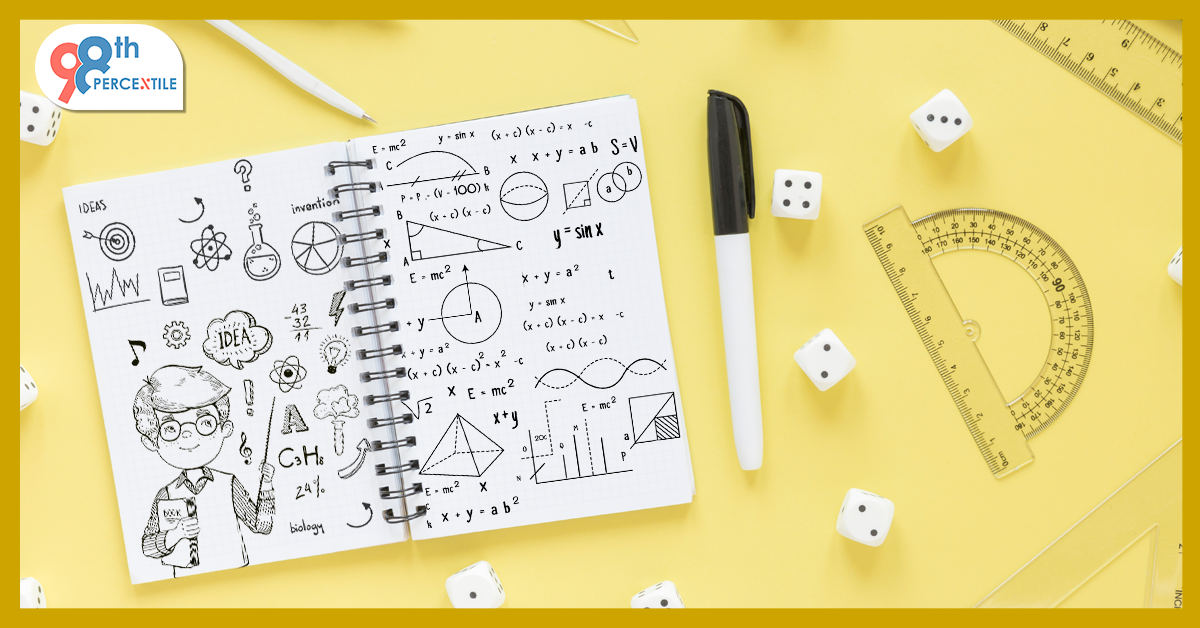Mathematical Transformations
Mathematical transformations are basic ideas that have many applications in physics, computer graphics, engineering, and other disciplines. They explain how an object's size, form, orientation, or position can change. The four main categories of transformations that we will discuss in this blog article are dilation, reflection, translation, and rotation. We will investigate their meanings, characteristics, and practical uses.
Download FREE Math Worksheets!
Rotation
An object can be transformed by rotation by turning it around a fixed point known as the center of rotation. The magnitude and direction of the turn are determined by the rotation angle. Rotations in two-dimensional space can be either counterclockwise or clockwise. Rotations in three-dimensional space take place along an axis.
Important characteristics
- Distances between points are maintained by rotations.
- Two rotations together make one additional rotation.
- Because rotations may be reversed, the original object can be obtained by applying a rotation and then its opposite.
- Practical Use: Rotation is crucial in animation, robotics, and engineering design. For example, in animation, rotations are used to simulate movement, while in robotics, they control the orientation of robotic arms and tools.
- Translation: Any transformation that shifts an object's points all the same amount in one direction is called translation. Translations, in contrast to rotations, simply alter an object's position; they have no effect on its size or form.
1. Distances, angles, and forms are maintained during translations.
2. Another translation is the result of combining two translations.
3. Translations are reversible; the original object can be obtained by performing a translation and then its reverse.
- Practical Use: Computer graphics employ translations to move items on the screen, while GPS navigation systems use them to track the movement of cars.
- Dilation: Dilation is a transformation that modifies an object's size without affecting its shape. The item is stretched or contracted in relation to the center of dilation, which is a fixed point.
1. Dilations maintain an object's orientation.
2. Two dilations together make one additional dilatation.
3. Dilations are reversible; the original object can be obtained by applying a dilation and then its reversal.
- Practical Use: Dilations are used in medical imaging to enlarge images without losing important information, as well as in map scaling, which adjusts distances on a map proportionately.
Real-life Examples of Transformations
- Reflection: Architecture and Interior Design: Reflections are frequently employed in architecture and interior design to produce symmetry and aesthetic appeal. Reflective surfaces, like mirrors and glass panels, are frequently used by architects to enlarge and open up spaces. Mirrors positioned thoughtfully around a room can improve lighting and give the impression of depth in interior design.
- Art and Photography: To give visual appeal and intricacy to photographs, reflections are commonly used in art and photography. To produce visually striking compositions, photographers frequently capture reflections in windows, mirrors, and water features. Reflective surfaces are a tool used by artists to investigate themes of perception, identity, and duality.
Translation
- Global Positioning System (GPS): GPS technology, which uses satellites to pinpoint an object's location on Earth's surface, depends heavily on translation. GPS receivers determine how a device moves or is translated in relation to a fixed point, like a satellite or GPS receiver station. Users are then given precise navigation instructions based on this knowledge, which helps them find their way around efficiently.
- Animation and Motion Graphics: To imitate movement, translation is widely employed in animation and motion graphics. Animators successfully transmit stories by transferring objects or characters across a screen or inside a scene, giving the impression of motion. Translation is a technique used in 3D animation to animate objects in virtual environments, such as cars and characters, giving them life-like movement.
Dilation
- Medical Imaging: Dilation plays a critical role in medical imaging procedures like computed tomography (CT) scans and magnetic resonance imaging (MRI). Resizing pictures is a common technique used in these imaging modalities to improve visualization or accurately depict bodily features. Medical specialists can zoom in on particular areas of interest while preserving the image's integrity thanks to dilation.
- Scaling: To precisely scale maps in cartography, dilation is employed. Cartographers can resize maps to depict different geographic areas while maintaining the relative distances between cities, landmarks, and other geographical features by using dilation.
FAQs (Frequently Asked Questions)
Q1: How does translation work?
Ans: Translation is the transformation that slides a figure in a certain direction without changing its size or shape. Every point of the figure moves the same distance and in the same direction.
Q2: What is reflection?
Ans: Reflection is the transformation that flips a figure over a line called the line of reflection. The image and the pre-image are mirror images of each other across the line of reflection.
Q3: What does dilation involve?
Ans: Dilation is the transformation that enlarges or reduces a figure by a scale factor. Each point of the figure moves away from or towards the center of dilation, maintaining the same shape but changing in size.
Q4: How do I perform these transformations on a coordinate plane?
Ans: Each transformation can be described using specific rules:
Rotation: Rotate each point of the figure around the center of rotation by a certain angle.
Translation: Move each point of the figure a certain distance horizontally and vertically.
Reflection: Reflect each point of the figure across the line of reflection.
Dilation: Multiply the coordinates of each point by a scale factor to enlarge or reduce the figure.
Q5: Are there any real-life applications of these transformations?
Ans: Yes, transformations are used in various fields such as computer graphics, engineering, architecture, and animation. For example, in computer graphics, transformations are used to manipulate objects on the screen, like rotating or scaling images. In architecture, transformations are essential for designing and scaling structures accurately.
Book FREE Math Trial Classes Now!

 Students/Staff
Students/Staff Parents
Parents ElevatEd
ElevatEd
.png?width=1200&height=628&name=2%20(6).png)














